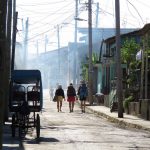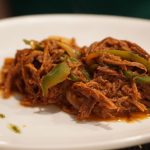Havana Cigar ...The Leader of Tobacco
The composition of the soil, the particular climatic conditions, the know-how, the experience of hundreds of years. Havana cigars are synonymous with Cuba and are considered as valuable as an expensive bottle of wine.
It is the trademark of Cuba. The symbol of many prominent men and women -self-confident - around the world. They are 100% handmade, soft to the touch, highly aromatic, with their main characteristic being their delightful slow burn. For the initiates they mark the supreme pleasure after a formal dinner, the sealing of an important agreement, their lighting marks the celebration of an important event in everyday life.
Every cigar lover is fanatical about their favourite brand. Fidel had the Cohiba Corona Especial. Wisnston Churchill smoked Romeo y Julieta. The American actor Orson Welles, Montecristo and so on. Cuba's most iconic product, for the last 18 years, has been celebrating its fame with thousands of attendees at the annual Festival del Habano in the capital Havana.
The best cigars in the world are produced in Cuba and already since 17ο century are the pillar of the economy of the Caribbean metropolis. They are hand-rolled one by one in factories throughout the country, their blend is made exclusively from Cuban tobacco (unlike that produced in the Dominican Republic, Nicaragua, Mexico and other tobacco-producing countries), and the ritual of harvesting, drying, cutting and rolling is a particularly laborious process, involving some 500 individual manual steps. It is worth mentioning that up to 100 tobacco leaves may be needed to make a cigar.
According to tradition, the first cigar was 'seen' by Christopher Columbus and his Spanish explorers in 1492, when they saw the island's natives smoking a kind of 'primitive cigarette'. The plant was called 'cohiba' and the pipe through which they inhaled the smoke was called a 'tabaco'. The word cigar, according to one version, comes from its homonym 'ciquar' or 'sikar', the ancestor of the present-day cigar in the Mayan language.
Naturally, this addictive discovery travelled with them back to the Old Continent. From the shores of Spain and Portugal, in the course of time it spread as a habit all over the Earth, spreading as the favourite pleasure of thousands of personalities - thousands, politicians, artists, intellectuals, revolutionaries - who loved the prestige it gave them, even to the point of identifying with it. Winston Churcill, Che Guevara, Fidel Castro, John Kennedy, Lord Byron, Ernest Heminway, Alfred Histckock are just a few of the cigar fanatics, each with countless recorded stories revolving around their voluptuous companion. Case in point is the historic moment when President John Kennedy, before the signing of the embargo in the 1960s, ordered all the stocks of H. Uppman Petit Corona - his favourite brand - that were scattered all over Washington, as he knew first-hand that he would never find them again in the USA...
Habanos | The miracle of Cuba
Famous and legendary beyond legend, Havana cigars are still known as "habanos", the production and distribution of which is carried out under the auspices of the official Cuban state company, which controls their quality and export worldwide - due to the embargo, except for the USA. In an effort to avoid multiple imitations, each habanos bears a seal of authenticity (with the Cuban flag and the image of a tobacco plantation), and there are over 25 brands of cigars, the most famous being Cohiba, Montecristo, Partagas, Trinidad, Cuava, San Cristobal, Romeo y Julieta, H. Upmann, Punch, etc. Of course, cigars are not cheap, not even when you intend to acquire them in "mother" Cuba. The cost of a Cohiba or an Upmann is estimated at €25, while others go as high as €50 each.
This summer, in honour of the 90th birthday of the now deceased "comandante" Fidel, the 72-year-old Cuban cigar maker "Cueto" broke his personal Guinness record (until then it was 82 m!) by making the world's longest cigar, 90 m long.
However, as far as the tobacco-producing regions of the largest Caribbean island are concerned, there are five, with the most famous and most famous being Pinar del Rio in Vuelta Abajo, where the highest quality and most popular tobacco is born. Most of the farms are located there, where 80% of the country's total production is concentrated. Referred to as the "Mecca of Tobacco", it acts as a magnet for tourists, who visit the farms that have opened their gates to the public, offering an insider's look at the local ritual. After all, as insiders say, the production of tobacco is not very different from the production of a good wine. The quality of the fruit, the subsoil, the weather conditions, proper ripening, the knowledge and skill of each craftsman attest to the perfect result. And when the result is indeed impeccable, it recalls the saying of the French writer Victor Hugo, who, as one of the main exponents of Romanticism, said: "smoke is the plant that transforms thoughts into dreams"...





